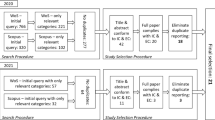Abstract
In today’s systems development environments, object models are becoming increasingly important. However, given the complexity of UML, it is difficult to create quality object models; further, while current CASE tools can aid in drawing object models, they do not provide much support for enhancing the quality of object models. To this end, we developed a prototype of a knowledge-based system designed to facilitate the creation of quality object models by novice analysts. Using a design science approach, we provide a description of the design objectives, the system architecture and implementation details, and discuss results of an initial evaluation of the systems’ efficacy. The analysis of the system demonstrates its ability to reliably extract relevant information from use case descriptions, and can lead to significantly more correct classes, attributes, and relationships being identified; however, the analysis has shown that the tool has not prevented novice analysts from adding incorrect elements to object models.
Access this chapter
Tax calculation will be finalised at checkout
Purchases are for personal use only
Similar content being viewed by others
References
Antony SR, Batra D (2002) CODASYS: a consulting tool for novice database designers. ACM Sigmis Database 33(3):54–68
ArgoUML (2006) ArgoUML version 0.20. http://argouml.tigris.org/. Retrieved 6 Aug 2007
Bolloju N (2004) Improving the quality of business object models using collaboration patterns. Commun ACM 47(7):81–86
Borstler J, Hadar I (2008) Pedagogies and tools for the teaching and learning of object oriented concepts. Lect Notes Comput Sci 4906:182
Coad P, North D, Mayfield M (1997) Object models: strategies, patterns, and applications, 2nd ed. Prentice-Hall, Upper Saddle River
Dobing B, Parsons J (2006) How UML is used. Commun ACM 49(5):109–113
Eriksson HE, Penker M, Lyons B, Fado D (2004) UML 2 toolkit. Wiley, Indianapolis
Fowler M (1997) Analysis patterns: reusable object models. Addison-Wesley, Reading
Friedman-Hill E (2005) Jess version 7.0b6. http://eprints.agentlink.org/5380/. Retrieved 19 April 2010
Hevner AR, March ST, Park J, Ram S (2004) Design science in information systems research. MIS Q 28(1):75–105
Kaindl H (2004) Active tool support for requirements engineering through RETH. In: Proceedings of the 12th IEEE international requirements engineering conference, Kyoto, Japan, pp 362–363
Kuechler B, Vaishnavi V (2008) On theory development in design science research: anatomy of a research project. Eur J Inf Syst 17(5):489–504
March ST, Smith GF (1995) Design and natural science research on information technology. Decis Support Syst 15(4):251–266
Moritz SH, Blank GD (2005) A design-first curriculum for teaching Java in a CS1 course. ACM SIGCSE Bull 37(2):89–93
Peffers K, Tuunanen T, Rothenberger MA, Chatterjee S (2007) A design science research methodology for information systems research. J Manage Inf Syst 24(3):45–77
Purao S (1998) APSARA: a tool to automate system design via intelligent pattern retrieval and synthesis. ACM SIGMIS Database 29(4):45–57
Robbins JE, Redmiles DF (1998) Software architecture critics in the Argo design environment. Knowl Based Syst 11(1):47–60
Robbins JE, Redmiles DF (2000) Cognitive support, UML adherence, and XMI interchange in Argo/UML* 1. Inf Softw Technol 42(2):79–89
Schenk KD, Vitalari NP, Davis KS (1998) Differences between novice and expert systems analysts: what do we know and what do we do? J Manage Inf Syst 15(1):9–50
Shanks G, Tansley E, Weber R (2003) Using ontology to validate conceptual models. Commun ACM 46(10):85–89
Siau K, Cao Q (2001) Unified modelling language: a complexity analysis. J Database Manage 12(1):26–34
Siau K, Erickson J, Lee LY (2005) Theoretical vs. practical complexity: the case of UML. J Database Manage 16(3):40–57
Tigris.org (2009) Welcome to ArgoUML. http://argouml.tigris.org/. Retrieved 21 April 2010
de la Vara JL, Sánchez J (2008) Improving requirements analysis through business process modelling: a participative approach. In: Business information systems: 11th international conference, BIS 2008, Innsbruck, Austria, May 2008, Proceedings, p 165
Wand Y, Weber R (2002) Research commentary: information systems and conceptual modelling—a research agenda. Inf Syst Res 13(4):363–376
Wohed P (2000) Tool support for reuse of analysis patterns—a case study. In: Conceptual modelling—ER 2000, Lecture Notes in Computer Science, vol 1920. Springer, Berlin, pp 591–660
Acknowledgments
The work described in this paper was substantially supported by a grant from the Research Grants Council of the Hong Kong Special Administrative Region, China (Project No. CityU 110207).
Author information
Authors and Affiliations
Corresponding author
Editor information
Editors and Affiliations
Appendix: Small Bytes Subscription System Case Study
Appendix: Small Bytes Subscription System Case Study
A small independent software journal, Small Bytes, has asked you to design a new system for managing its subscriptions and editorials. While the concept of managing subscriptions is quite straightforward, the details are numerous, as described below:
Small Bytes is published on a monthly basis; a typical monthly issue consists of 5–10 articles, each written by one or more authors in the software engineering field. Though the authors receive no payment for their articles, they do receive a year’s free subscription as a token of appreciation for their efforts; if they already have a subscription, then the expiration date is extended for a year.
Small Bytes has an editorial board of advisors, some of whom may also be authors from time to time; each advisor on the editorial board normally serves for a one-year or two-year term, and receives a complimentary subscription to the magazine for that term. Three or four members of the editorial board, selected by the editor, review each submitted articles and provide their comments to the editor. As with most magazines, issues are scheduled and planned months in advance.
Small Bytes is managed by an editor supported by an assistant who is responsible for keeping track of subscriptions and submissions using an in-house computerized system. The assistant receives subscription orders (new and renewal) and new article submissions via mail or fax, and registers those orders and submissions into the system. The editor does a quick review of the submissions to ensure that they fit the magazine before assigning three or four advisors for a detailed review and comments. Upon receiving replies from the advisors, the assistant records the review comments into the system. From time to time, upon receiving instructions from the editor, the assistant updates the list of advisors and their subject areas.
Small Bytes is sold on a subscription basis; most subscriptions are for a one-year period, but the publisher accepts subscriptions for periods longer than or shorter than a year by simply pro-rating the annual subscription price. Payments for new subscriptions are normally received by cheque. Some subscribers pay by credit card, but the publisher insists (because its bank insists) that credit card payments be accompanied by a signature; this means that the credit card orders are typically sent by fax or mail. As noted earlier, contributing authors and members of the editorial board of advisors receive a complimentary one-year subscription to the magazine.
Rights and permissions
Copyright information
© 2011 Springer Science+Business Media, LLC
About this paper
Cite this paper
Bolloju, N., Schneider, C. (2011). Facilitating the Creation of Quality Object Models Using a Knowledge Based System. In: Pokorny, J., et al. Information Systems Development. Springer, New York, NY. https://doi.org/10.1007/978-1-4419-9790-6_11
Download citation
DOI: https://doi.org/10.1007/978-1-4419-9790-6_11
Published:
Publisher Name: Springer, New York, NY
Print ISBN: 978-1-4419-9645-9
Online ISBN: 978-1-4419-9790-6
eBook Packages: Computer ScienceComputer Science (R0)




